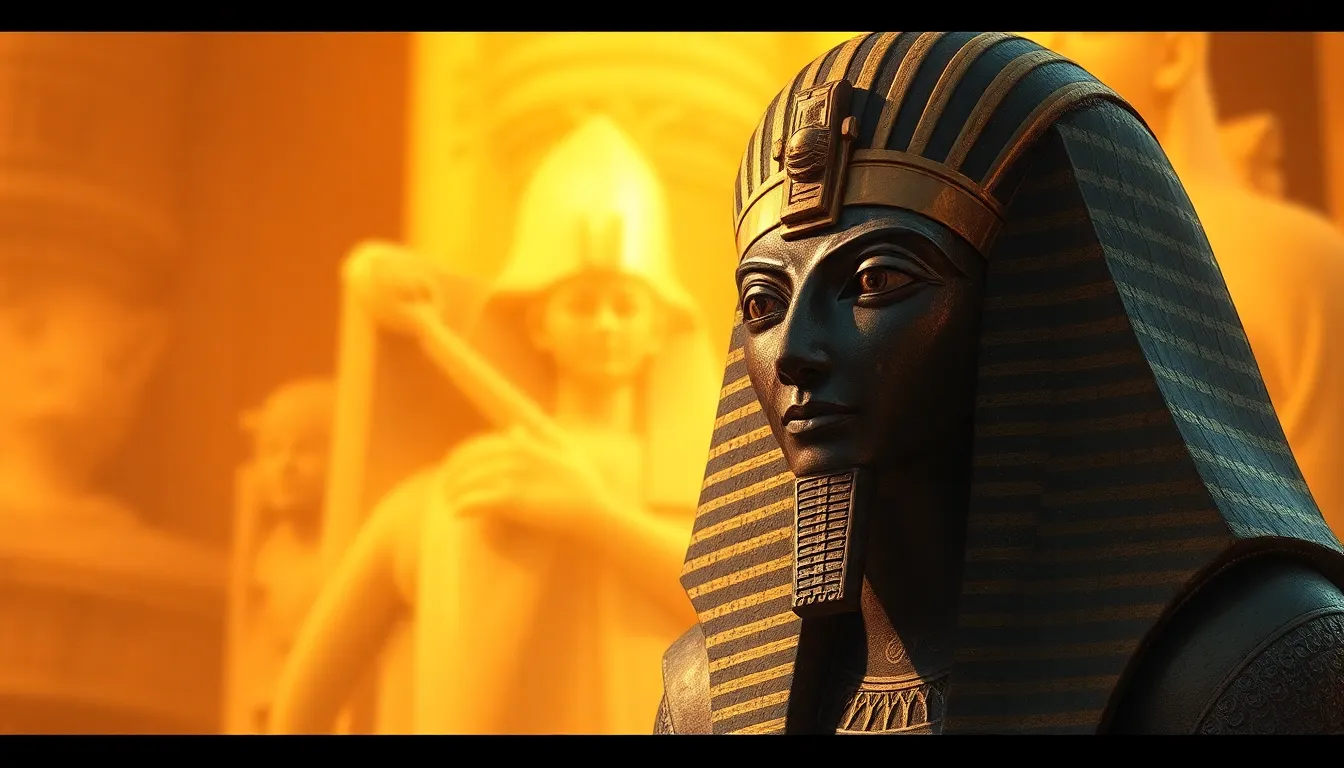From Sekhmet to Bes: The Diverse Faces of Protection in Egyptian Mythology
1. Introduction
Egyptian mythology is a rich tapestry of stories, deities, and beliefs that shaped the ancient culture of Egypt. The significance of mythology in Egypt cannot be overstated; it served as a framework for understanding the world, the cosmos, and the human experience. Among the myriad themes present in these myths, the theme of protection stands out as a critical aspect of daily life and the afterlife.
Protection was not only a physical necessity but also a spiritual imperative. Egyptians believed that their gods and goddesses played pivotal roles in safeguarding their lives, ensuring their safety in this world and the next. This article explores the various faces of protection as represented by notable deities in Egyptian mythology, examining their roles, attributes, and the rituals associated with them.
2. The Role of Deities in Egyptian Protection
In ancient Egyptian society, gods and goddesses were viewed as protectors who governed different aspects of life and the afterlife. Each deity held specific powers and functions that contributed to the well-being of individuals and the community. The protective roles of these deities were integral to religious practices and daily rituals.
Some of the key protective roles in society included:
- Guardians of the Home: Deities like Bes and Taweret were invoked for domestic safety.
- Warriors in Battle: Goddesses like Sekhmet provided protection during conflicts.
- Guides in the Afterlife: Osiris and Anubis ensured safe passage to the afterlife.
These deities were revered through offerings, prayers, and rituals, emphasizing the importance of divine protection in every aspect of life.
3. Sekhmet: The Fierce Protector
One of the most formidable figures in Egyptian mythology is Sekhmet, the goddess of war and healing. Known for her fierce nature, Sekhmet embodies the duality of protection and destruction. She was often depicted as a lioness, symbolizing her power and ferocity in battle.
Myths about Sekhmet illustrate her protective attributes, particularly during times of war. One prominent myth recounts how she was sent by Ra, the sun god, to punish humanity for their sins. However, her destructive tendencies threatened to annihilate mankind until she was calmed by the sight of beer dyed red, which she mistook for blood. This story highlights her dual nature; while she could bring destruction, she also had the power to heal and protect those who sought her favor.
4. Bes: The Guardian of the Home
In stark contrast to Sekhmet’s fierce demeanor, Bes is a dwarf god who represents domestic protection and joy. He is often depicted as a jovial figure with a lion-like face, symbolizing both guardianship and the warmth of home. Bes was particularly venerated by mothers and children, as he was believed to ward off evil spirits and ensure the safety of families.
His protective role included:
- Guarding against malevolent forces that could harm children.
- Providing comfort and joy to families during daily life.
- Ensuring safe childbirth and motherly care.
Artistic representations of Bes often included symbols of protection, such as knives, and he was commonly featured in household items, amulets, and wall paintings to invoke his guidance and safety.
5. Other Notable Protective Deities
Egyptian mythology is replete with various deities associated with protection. Each of these gods and goddesses contributed uniquely to the concept of safeguarding individuals and communities:
- Thoth: The god of wisdom and writing, Thoth was believed to protect knowledge and ensure the safety of the soul during judgment.
- Hathor: Often depicted as a cow goddess, Hathor was associated with love and motherhood, providing protection through nurturing and joy.
- Horus: The god of the sky and kingship, Horus was seen as a protector of the pharaohs and the nation, symbolizing rightful order and safety.
These deities played significant roles in both personal and communal aspects of life, embodying the various dimensions of protection that Egyptians valued.
6. Protective Amulets and Rituals
Amulets held immense significance in ancient Egyptian culture as symbols of protection and divine favor. These small objects, often inscribed with the names of gods or protective symbols, were worn or placed in tombs to ward off evil and ensure safety.
Common symbols found in amulets included:
- The Eye of Horus: A symbol of protection and royal power, believed to provide safety against evil.
- Scarab Beetle: Representing rebirth and protection, it was often used in funerary contexts.
- Ankh: Symbolizing life and immortality, it was believed to protect the wearer from harm.
Rituals were also performed to invoke divine protection. These included offerings to the gods, recitations of prayers, and specific ceremonies during significant life events such as childbirth and funerals. Such practices emphasized the importance of maintaining a connection with the divine to ensure safety and guidance.
7. The Afterlife and Protection
The concept of protection extended beyond earthly existence into the afterlife. Egyptians believed that deities played crucial roles in the judgment of souls, determining their fate in the afterlife. Osiris, the god of the underworld, and Anubis, the god of mummification, were paramount in this process.
The protective significance of funerary practices cannot be overlooked. Elaborate tombs, mummification, and burial rituals were all designed to safeguard the deceased and ensure a safe passage to the afterlife. Items placed in tombs, such as amulets and food offerings, served to protect the soul in its journey beyond death.
8. Conclusion
The exploration of protection in Egyptian mythology reveals a complex and multifaceted belief system that shaped the ancient Egyptians’ understanding of safety, guardianship, and the afterlife. From the fierce warrior goddess Sekhmet to the joyful guardian Bes, the diverse manifestations of protection showcase the importance of these deities in daily life and spiritual practice.
These beliefs have left a lasting impact on modern interpretations of safety and guardianship, reminding us of the universal human desire for protection in both our worldly and spiritual endeavors.




